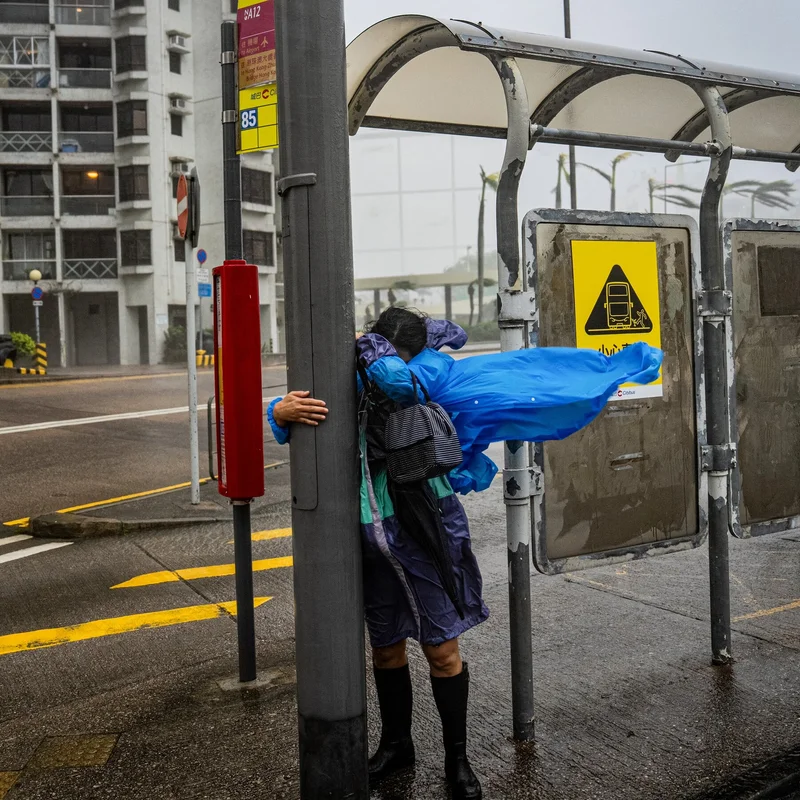Super Typhoon Ragasa, one of the most powerful storms of 2025, has left a trail of destruction across the Western Pacific, killing at least 18 people and forcing more than one million to evacuate in southern China alone. The storm’s path—from the Philippines through Taiwan and into Guangdong Province—has highlighted both the growing intensity of tropical cyclones and the critical importance of disaster preparedness in an era of climate change [[1], [11]].
Storm’s Deadly Path
Ragasa first made landfall in the northern Philippines on Monday, where it triggered landslides and flash floods, killing four people and damaging 34 bridges, mostly on Luzon Island . It then skirted south of Taiwan, where 14 lives were lost and 17 others remained missing as of Wednesday evening due to catastrophic flooding in Hualien County .
Though the typhoon passed about 75 miles from Hong Kong, it still caused significant damage—flooding coastal neighborhoods, toppling hundreds of trees, and injuring 90 residents. Dramatic videos showed seawater surging through hotel lobbies and restaurants, with one French bistro owner in Tseung Kwan O watching helplessly as furniture floated away .
Unprecedented Evacuations in China
Anticipating a direct hit, Chinese authorities in Guangdong Province activated their highest-level typhoon emergency response, evacuating over one million residents ahead of landfall on Wednesday . More than 38,000 firefighters and 400 emergency teams were deployed, and $21 million was allocated for disaster relief across Guangdong, Hainan, and Fujian provinces .
Typhoon Ragasa: Key Facts at a Glance
| Metric | Value | Context |
|---|---|---|
| Peak Wind Speed | 165 mph (265 km/h) | Briefly the world’s strongest storm of 2025 |
| Landfall Wind Speed (Guangdong) | 120 mph (193 km/h) | Equivalent to a Category 3 hurricane |
| Total Fatalities | 18 | 4 in Philippines, 14 in Taiwan |
| Evacuations | 1,000,000+ | Primarily in Guangdong Province |
Climate Change Connection
Experts say Ragasa’s extreme intensity is consistent with long-term climate trends. Rising sea surface temperatures have made storms like Ragasa up to 10% wetter and slightly windier than similar typhoons in past decades [[6], [28]].
“Typhoons in the Western Pacific have grown in intensity as a result of higher temperatures in the sea and atmosphere stemming from climate change,” said Shun Chi-ming, former director of the Hong Kong Observatory .
How Climate Change Supercharges Typhoons – A Step-by-Step Flow
- Warmer Oceans: Sea surface temperatures rise due to global warming.
- More Energy: Tropical cyclones draw more energy from warm water, increasing wind speeds.
- Heavier Rainfall: A warmer atmosphere holds more moisture, leading to extreme precipitation .
- Rapid Intensification: Storms like Ragasa can escalate from tropical depression to super typhoon in under 48 hours .
Regional Preparedness and Response
Hong Kong’s proactive measures—closing Disneyland, canceling flights, and deploying flood barriers—helped minimize casualties despite widespread flooding . In Shenzhen, 400,000 residents were prepped for evacuation, and Macau shut down its casinos as a precaution [[12], [16]].
Now, attention turns to Vietnam and Laos, where Ragasa is expected to weaken but still bring heavy rains later this week .
For more on how climate change is reshaping global weather patterns, see our in-depth analysis on [INTERNAL_LINK:climate change and extreme weather].




